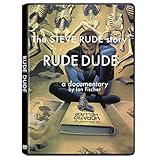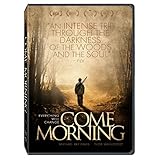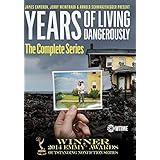
As the review last week of the recent Sony Blu-ray (BD) releases of "Ghostbusters" promises, this review exclusively focuses on the concurrent BD release of "Ghostbusters II." The earlier review provides detailed information regarding both the lore of the franchise and the variety of the new releases.
"II" takes place five years in both film and real time after "Ghostbusters." The sequel begins on a rather dystopian note regarding the impact of the events in the original on our heroes and those near and dear to the their hearts, all of whom return (and are played by the original actors.)
The following clip, courtesy of YouTube, of the trailer for "II" offers a nice look at the action and comedy of the film.
Former cellist (and current art restorer) Dana Barrett prompts a reunion of the band of exterminators of the supernatural on reporting an event that seems to involve a non-corporeal being. (Dana also once again finds herself the object of the affection of an especially weird geek.)
This variation on the plot in the original film leads to a similar variation in which the titular scientists rapidly discover the build up of an evil force that will soon culminate in a powerful evil being getting unleashed in New York before going on to take over the world. Once again, Dana is at the center of the action. Also, once again, the closing credits roll over the footage of the aftermath of the climatic battle.
Aside from being another successful outing in the franchise, "II" nicely incorporates the lore from the uber-awesome Saturday morning cartoon series "The Real Ghostbusters" that hits the airwaves in the wake of the first film. These include receptionist Janine and nerdy accountant turned attorney Louis commencing their personal relationship. Additionally, pet blob o' ectoplasm Slimer (who gets his own spinoff animated series) has a hilarious cameo in "II."
"II" looks and sounds just as good as "Ghostbusters" in BD; in fact, the crisp and clear sound shows how apparently skimping a little on the atmospheric music in "II" slightly diminishes it. A early scene involving the dreaded Vigo the Carpathian is plenty eerie but would be downright creepy if accompanied by the same type of music that plays over similar scenes in "Ghostbusters."
On a merely feel-good note, the ultimate lesson of "II" is a perfect video happy pill for the world-at-large and specifically New York City during an era in which the national mood has never seemed to have improved since September 11, 2001. Although delivered in a hilariously incredibly hokey manner, this lesson regarding both the power of positive thinking and the need for community is more relevant today that it was when "II" hit movie screens in 1989.
The extras include a special feature on director Ivan Reitman and star Dan Akyroyd discussing the sequel and future plans for the franchise. Though not watched before writing this review, it is likely that Reitman and Akyroyd discuss the announced plans to begin filming "Ghostbusters III" in 2015.
Anyone with questions or comments regarding either "Ghostbusters" film or the animated series is strongly encouraged to email me. You can also connect on Twitter via @tvdvdguy.


















